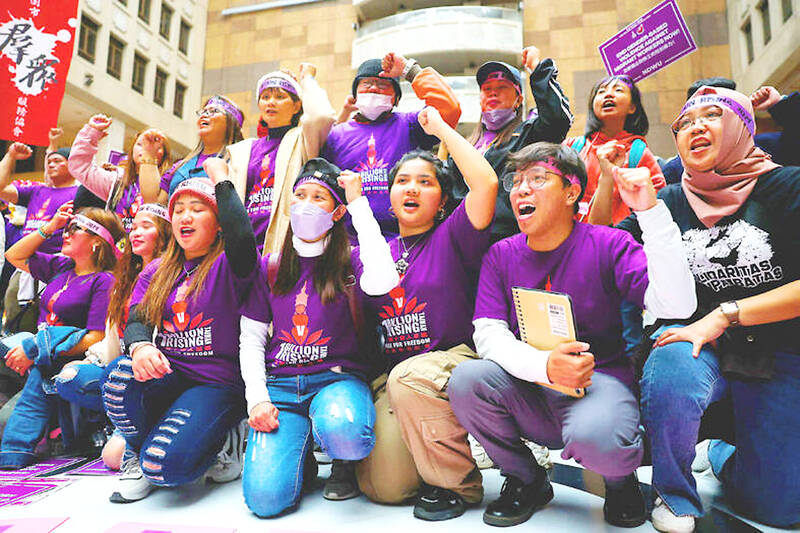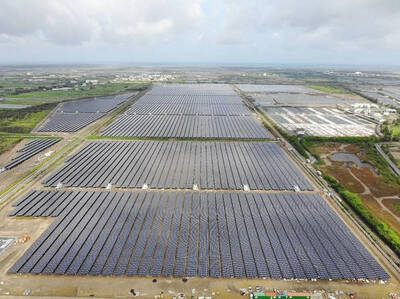The corruption cases surrounding former Taipei Mayor and Taiwan People’s Party (TPP) head Ko Wen-je (柯文哲) are just one item in the endless cycle of noise and fuss obscuring Taiwan’s deep and urgent structural and social problems. Even the case itself, as James Baron observed in an excellent piece at the Diplomat last week, is only one manifestation of the greater problem of deep-rooted corruption in land development.
Last week the government announced a program to permit 25,000 foreign university students, primarily from the Philippines, Indonesia and Malaysia, to work in Taiwan after graduation for 2-4 years. That number is a fraction of the need. The government forecasts that by 2030 Taiwan will be short 480,000 workers — 350,000 by 2028.
At the same time, it also announced that the population declined for the 8th straight month, with deaths (16,830) exceeding births (11,643). At the nation’s current total fertility rate (TFR) of roughly 0.8 kids per woman, for every 100 people today, there will be 16 grandchildren and just 6 great-grandchildren. These dire birth rates are continuing to decline.

Photo: Ann Wang, Reuters
OUTDATED IMMIGRATION POLICIES
The program to allow foreign students to have subsidized tuition and jobs in Taiwan after graduation was not accompanied by any offer to give them dual citizenship, a powerful incentive that would make them stakeholders and bring in large numbers of new workers. Instead, a period of time too short for them to acquire even permanent residency is offered, with no prospects of citizenship or a long-term career. Taiwan’s racist attitudes toward immigrants continue to shape the nation’s immigration policies, to the detriment of all concerned.
Consider this from another perspective: current policy is to invite thousands of young people in their prime reproductive years to come to Taiwan and then give them no incentive whatsoever to stay, reproduce and create new citizens.

Photo courtesy of Wikimedia Commons
Fear of job loss, presented in tropes from a bygone era, also continues to permeate society. Later this year the Ministry of Labor is piloting a new program to give greater flexibility to migrant care-givers. Currently migrant workers live-in with their charges, a situation that leads to much abuse while failing to address needs for many elderly. The plan calls for the government to “dispatch them to private homes to provide medical and general care services for one day, half a day or an even shorter time frame.” This is something many observers have long called for.
What could be wrong with that? Last month the Peng Wan-ru Foundation and other groups criticized the plan, saying that “cheap hourly migrant workers” could “trigger a wave of unemployment,” which would lead to the “collapse” of long-term care. This criticism is a fantasy: as a cursory glance at the numbers shows, Taiwan faces a large and growing shortage of caregivers (just 20 percent of locals who train for the field actually engage in it) which can only be alleviated by increased employment of migrant workers. As of last year, only 49,425 caregivers were registered — the 240,000 migrant workers in the field lie outside that system. The math is simple: there are already roughly 800,000 people over the age of 80. Next year Taiwan is expected to officially become a super-aged society. By 2028, according to the National Development Council, the aged will outnumber the young 2-1.
Everywhere one looks in Taiwan’s employment situation, from AI-related professions to hotel cleaners, the story is the same: not enough warm bodies. How great is our need for people? According to the Executive Yuan, the premier requested relevant government agencies to go “all-out to prevent a future labor shortage caused by a projected decline in Taiwan’s working-age population.”

Photo: Taipei Times
Oh wait! My mistake. That was in 2013.
Year after year, nothing changes.
NEW MINDSET NEEDED
It’s blindingly obvious after decades of policy failure that the government (currently the Democratic Progressive Party) needs to move forward on a program of cultural change, starting with its officialdom, a program to address the developmentalist tropes and folk-beliefs Taiwanese hold about immigration, about people from other countries and about the nation’s economic circumstances.
For example, last month the government itself complained that the meager minimum wage increase of 4.08 percent would “cost” labor, employers and the government “around NT$22.335 billion.” As local labor commentator Roy Ngerng pointed out on the platform formerly known as Twitter, that isn’t how a wage increase should be thought of. Instead, it should be treated as a stimulus for domestic consumption demand. After all, the increase will be spent in Taiwan: people aren’t going to bubble-wrap their salary boosts and ship them overseas.
Until the government gets the public to change its views, there will be no dual citizenship programs. Without such programs for foreign laborers, young people will not come to Taiwan in great numbers and stay. The incentives are simply not there. Instead, they will bank their salaries and then, when they leave after a few years, ship their savings home, removing that wealth and their potential children from Taiwan. Ironically, the government is going to repeatedly give Taiwanese wages to foreign workers who will bubble-wrap their earnings and ship them overseas, because it refuses to make those workers into Taiwanese who will keep that money at home.
As I write, the government is being formally petitioned to give residents holding permanent residency the opportunity to become dual citizens (title: 給在台灣永久居留的外國人一個平等歸化台灣國籍的機會). If the petition receives 5,000 signatures in the next few weeks, the government will have to formally consider it. It is halfway there.
Please take a moment to sign this petition (shorturl.at/E47P6). It exists not just for the good of those of us who are permanent residents, but for everyone in the nation. Taiwan will not be able to address its population decline and all the issues it will cause, from underfunded pensions to an understaffed military to the lack of skilled workers, until everyone who comes here has a reasonable route to becoming a citizen.
Everyone knows Doris Brougham, the founder of Studio Classroom, who did so much to drive English education in Taiwan and who touched the lives of millions. She passed away recently. Despite her numerous and widely recognized contributions, it took Taiwan 70 years to give her citizenship.
Absolutely shameful. For the good of the nation, we need to make sure that shame is never replicated.
Sign the petition.
Notes from Central Taiwan is a column written by long-term resident Michael Turton, who provides incisive commentary informed by three decades of living in and writing about his adoptive country. The views expressed here are his own.

In recent weeks the Trump Administration has been demanding that Taiwan transfer half of its chip manufacturing to the US. In an interview with NewsNation, US Secretary of Commerce Howard Lutnick said that the US would need 50 percent of domestic chip production to protect Taiwan. He stated, discussing Taiwan’s chip production: “My argument to them was, well, if you have 95 percent, how am I gonna get it to protect you? You’re going to put it on a plane? You’re going to put it on a boat?” The stench of the Trump Administration’s mafia-style notions of “protection” was strong

Every now and then, it’s nice to just point somewhere on a map and head out with no plan. In Taiwan, where convenience reigns, food options are plentiful and people are generally friendly and helpful, this type of trip is that much easier to pull off. One day last November, a spur-of-the-moment day hike in the hills of Chiayi County turned into a surprisingly memorable experience that impressed on me once again how fortunate we all are to call this island home. The scenery I walked through that day — a mix of forest and farms reaching up into the clouds

With one week left until election day, the drama is high in the race for the Chinese Nationalist Party (KMT) chair. The race is still potentially wide open between the three frontrunners. The most accurate poll is done by Apollo Survey & Research Co (艾普羅民調公司), which was conducted a week and a half ago with two-thirds of the respondents party members, who are the only ones eligible to vote. For details on the candidates, check the Oct. 4 edition of this column, “A look at the KMT chair candidates” on page 12. The popular frontrunner was 56-year-old Cheng Li-wun (鄭麗文)

“How China Threatens to Force Taiwan Into a Total Blackout” screamed a Wall Street Journal (WSJ) headline last week, yet another of the endless clickbait examples of the energy threat via blockade that doesn’t exist. Since the headline is recycled, I will recycle the rebuttal: once industrial power demand collapses (there’s a blockade so trade is gone, remember?) “a handful of shops and factories could run for months on coal and renewables, as Ko Yun-ling (柯昀伶) and Chao Chia-wei (趙家緯) pointed out in a piece at Taiwan Insight earlier this year.” Sadly, the existence of these facts will not stop the